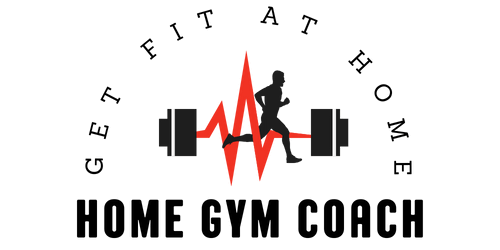Are you a fitness newbie looking to kickstart your journey to a healthier lifestyle? Look no further! This article serves as your friendly guide to creating custom workout plans designed specifically for beginners. Whether you’re aiming to shed some pounds, build muscle, or simply improve your overall fitness level, we’ve got you covered. From understanding your fitness goals to designing a workout routine that suits your needs and preferences, we’re here to help you embark on a successful fitness journey. Get ready to unleash your potential!

Understanding Your Fitness Goals
Identifying your fitness goals
Before you embark on your fitness journey, it’s crucial to identify your fitness goals. What do you want to achieve through exercise? Is it weight loss, muscle gain, increased endurance, or overall improvement in fitness? Take some time to reflect on your aspirations and write them down. Having a clear understanding of your goals will help guide you in creating a tailored workout plan that aligns with your desires.
Setting realistic expectations
While it’s definitely exciting to have big aspirations, it’s equally important to set realistic expectations for yourself. Remember that progress takes time and patience. Don’t expect to see dramatic results overnight. Instead, focus on making gradual improvements and enjoying the process. Setting small, achievable goals along the way will keep you motivated and prevent discouragement.
Determining your fitness level
Assessing your current fitness level is crucial in designing an effective workout plan. Take into consideration factors such as your cardiovascular endurance, muscular strength, and overall flexibility. This self-assessment will help you understand where you currently stand and where you need to improve. You may want to consult with a fitness professional or use online resources to assist you in determining your fitness level accurately.
Choosing the Right Exercise Type
Cardiovascular exercises
Cardiovascular exercises are vital for improving heart health, burning calories, and boosting your overall endurance. They include activities such as running, cycling, swimming, and dancing. Incorporating cardiovascular exercises into your workout plan will help you achieve weight loss goals, increase stamina, and improve cardiovascular fitness. Aim for at least 150 minutes of moderate-intensity cardio per week, or 75 minutes of vigorous-intensity cardio for optimal results.
Strength training exercises
Strength training exercises are essential for building muscle, increasing bone density, and boosting metabolism. These exercises typically involve resistance, such as weightlifting or bodyweight exercises. By challenging your muscles, you’ll not only strengthen them but also improve your overall functional fitness. Aim to perform strength training exercises at least two to three times a week, targeting different muscle groups each session.
Flexibility and mobility exercises
Flexibility and mobility exercises are often overlooked but are equally important in maintaining a balanced fitness routine. These exercises help improve your range of motion, prevent injuries, and enhance overall flexibility. Incorporate exercises such as stretching, yoga, or Pilates into your routine to keep your muscles supple and joints mobile. Aim to dedicate at least two to three sessions per week to flexibility and mobility exercises.
Creating a Schedule
Determining workout frequency
Now that you have an idea of the types of exercises you need to include, determine how often you’ll be working out. Consider your current schedule, commitments, and lifestyle factors. Aim for a balance between consistency and rest. Consistency is key to achieving your fitness goals, but make sure to allow enough rest days to promote muscle recovery and prevent burnout. A general recommendation is to engage in physical activity at least five times a week, with two rest days.
Allocating time for each workout session
Next, allocate an appropriate amount of time for each workout session. This will primarily depend on the type of exercise you’re performing and your fitness level. Cardiovascular workouts, for example, often range from 20 to 60 minutes, depending on intensity. Strength training sessions may last anywhere from 30 to 60 minutes. Remember to consider your personal preferences and availability when determining the duration of each session. Be sure to prioritize quality over quantity.
Consideration for rest and recovery
Rest and recovery play a crucial role in improving fitness and preventing overuse injuries. Plan for rest days strategically, allowing your muscles time to recover and repair. Rest days provide an opportunity for your body to adapt to the challenges imposed during your workouts. Listen to your body and don’t hesitate to make adjustments to your workout schedule if you’re feeling fatigued or overly sore. Recovery can also involve activities such as foam rolling, stretching, or engaging in low-intensity exercises.
Designing Your Workout Routine
Warming up and cooling down
Before diving into your workout, it’s essential to allocate time for warm-up and cool-down periods. Warming up helps increase blood flow to your muscles, prepares your body for exercise, and reduces the risk of injury. A proper warm-up should involve light aerobic activity and dynamic stretching. Cooling down, on the other hand, allows your heart rate to gradually return to its resting state and prevents dizziness or muscle stiffness. Stretching and foam rolling are excellent cool-down activities.
Selecting exercises for each muscle group
To ensure a well-rounded workout routine, include exercises that target each major muscle group. This will help you achieve balanced strength and functional fitness. For example, incorporate exercises such as squats, lunges, or leg presses to target your lower body. Don’t forget to include upper body exercises like push-ups, rows, or shoulder presses. Core exercises such as planks or Russian twists are also essential for stability and overall strength.
Balancing between cardio and strength training
Achieving a balance between cardiovascular exercises and strength training is key to a well-rounded workout routine. Both cardio and strength training offer unique benefits, so it’s important to ensure they are adequately incorporated into your plan. Strive for a good mix of both types of exercises throughout the week. You can alternate between days dedicated to cardio workouts and days focused on strength training or consider incorporating hybrid workouts that combine both elements.

Understanding Sets, Reps, and Rest
Defining sets and repetitions
When it comes to strength training, understanding sets and repetitions is essential. A set refers to a group of consecutive repetitions of an exercise, while a repetition (rep) is a single completion of an exercise. For instance, if you perform ten push-ups and rest, that would be considered one set of ten repetitions. The number of sets and reps you perform will depend on your fitness level, goals, and the specific exercise you’re performing.
Choosing appropriate weights or resistance
Selecting the appropriate weight or resistance is crucial to ensure your workouts are challenging enough to promote progress but manageable enough to maintain proper form and technique. Start with weights or resistance that allow you to complete the desired number of reps with proper form. As you become stronger, gradually increase the weight or resistance to continue challenging your muscles. Remember to focus on quality over quantity.
Determining rest periods between sets
Rest periods between sets provide your muscles with an opportunity to recover before the next set. The duration of your rest periods will depend on the intensity of your workout and your fitness goals. Shorter rest periods (30-60 seconds) are generally recommended for maintaining cardiovascular endurance and promoting calorie burn. Longer rest periods (1-3 minutes) are typically used for maximizing strength and muscle growth. Modify your rest periods to suit your specific needs and goals.
Progression and Overload
Gradually increasing intensity and difficulty
Progression and overload are key principles in achieving ongoing results and preventing fitness plateaus. Gradually increasing the intensity and difficulty of your workouts challenges your body to adapt and improve over time. This can involve increasing weights or resistance, adding more repetitions or sets, or performing advanced variations of exercises. Remember to make gradual progressions to avoid injury and allow your body adequate time to adapt.
Tracking progress and making adjustments
Tracking your progress is essential to determine if your workout plan is effective and to identify areas where adjustments may be needed. Keep a record of your workouts, including the exercises performed, sets, reps, weights used, and any other relevant details. This will help you monitor your improvements, identify strengths and weaknesses, and make informed decisions regarding your fitness routine. Consider regular assessments or body measurements to track changes in your physique.
Implementing progressive overload techniques
To ensure ongoing progress, it’s important to implement progressive overload techniques. These techniques can include methods such as increasing weights, decreasing rest periods, incorporating drop sets or supersets, or performing exercises at a slower tempo. By challenging your body in different ways, you’ll stimulate continuous growth and improvement. Explore different progressive overload techniques and incorporate them into your routine periodically to keep your workouts engaging and effective.

Tracking and Monitoring
Keeping a workout journal or using a fitness app
One of the most effective ways to track and monitor your workouts is by keeping a workout journal or utilizing a fitness app. These tools allow you to log your exercises, weights, reps, and other relevant details. Besides tracking your progress, they enable you to review your past performances, identify patterns, and make necessary adjustments. Choose a method that suits your preferences and make it a habit to regularly update your workout records.
Monitoring your performance and improvements
Beyond tracking your workouts, it’s important to monitor your performance and improvements in other aspects of your fitness journey. Pay attention to indicators such as increased endurance, improved strength, enhanced flexibility, or changes in body composition. Celebrate your achievements and use them as motivation to continue pushing forward. Monitoring these aspects will give you a holistic view of your progress and allow you to appreciate the positive changes you’re experiencing.
Tracking nutrition and hydration
While exercise plays a vital role in achieving your fitness goals, proper nutrition and hydration are equally important. Ensure you’re fueling your body with balanced meals that include lean proteins, whole grains, fruits, vegetables, and healthy fats. Stay hydrated by drinking an adequate amount of water throughout the day. Tracking your food intake and water consumption can help you ensure you’re meeting your nutritional needs and can have a significant impact on your overall fitness results.
Avoiding Common Mistakes
Starting too intense or too quickly
One common mistake many beginners make is starting their fitness journey with overly intense or demanding workouts. While enthusiasm is great, it’s important to start slowly and gradually increase the intensity. Pushing yourself too hard from the beginning can lead to burnout, injuries, or feeling discouraged. Ease into your workouts, allowing your body to adapt and progress naturally. Remember, it’s a marathon, not a sprint.
Not allowing sufficient recovery time
Recovery is just as important as the actual exercise itself. It’s during the recovery phase that your muscles repair and grow stronger. Failing to allow sufficient recovery time can hinder your progress and increase the risk of injuries. Make sure to incorporate rest days into your workout schedule and prioritize sleep and relaxation. Active recovery activities such as yoga or gentle stretching can also aid in promoting recovery and reducing muscle soreness.
Neglecting proper form and technique
Maintaining proper form and technique during exercises is crucial for maximizing effectiveness and minimizing the risk of injury. Poor form not only reduces the impact of the exercise but can also place unnecessary strain on your joints and muscles. Take the time to learn proper form and technique for each exercise or consider working with a certified personal trainer who can guide you. Don’t rush through exercises, prioritize quality over quantity, and always listen to your body.

Seeking Professional Guidance
Consulting with a certified personal trainer
If you’re new to the world of fitness or unsure about designing your workout plan, seeking guidance from a certified personal trainer can be immensely beneficial. Personal trainers have the knowledge and expertise to assess your fitness level, help you set realistic goals, and design a customized workout plan tailored to your individual needs. They can provide instruction on proper form, technique, and ensure you’re progressing safely and effectively.
Getting a proper assessment and guidance
In addition to consulting with a personal trainer, consider getting a proper assessment to accurately determine your starting point. This may involve a fitness assessment, body composition analysis, or consultation with a healthcare professional. These assessments will provide valuable insights into your current fitness level, identify any existing health concerns, and guide you in establishing appropriate goals. Seeking professional guidance at the beginning of your fitness journey can set you up for long-term success.
Considering specialized workout programs
Depending on your specific goals or interests, you may benefit from considering specialized workout programs. These can be tailored to activities such as running, cycling, swimming, or specific areas of focus like strength training or flexibility. Specialized programs provide structure, variety, and expert guidance in your chosen area, helping you progress and stay motivated. Research different programs or consult with a fitness professional to find one that aligns with your goals and preferences.
Staying Motivated and Consistent
Setting short-term and long-term goals
Maintaining motivation and consistency can be challenging, but setting clear and achievable goals can help. Set both short-term and long-term goals that are specific, measurable, attainable, relevant, and time-bound (SMART). Short-term goals can include weekly or monthly targets, while long-term goals can be the ultimate outcome you wish to achieve. Break down your long-term goal into smaller milestones and celebrate your achievements along the way to stay motivated and focused.
Finding a workout buddy or joining a fitness community
Exercising with a workout buddy or joining a fitness community can significantly enhance your motivation and enjoyment. Having a workout partner can provide accountability, support, and make your workouts more enjoyable. Consider asking a friend, family member, or coworker to join you, or explore local fitness classes or groups where you can meet like-minded individuals. Being part of a community with similar goals can create a supportive and inspiring environment that keeps you committed and motivated.
Rewarding yourself for achieving milestones
Rewarding yourself for achieving milestones is a fantastic way to stay motivated and acknowledge your progress. Treat yourself to something you enjoy, such as a spa day, a movie night, or a new workout outfit when you reach a specific goal. Rewards act as positive reinforcement and give you something to look forward to along your fitness journey. Remember to celebrate your accomplishments, no matter how big or small, as they are a testament to your hard work and dedication.
In conclusion, understanding your fitness goals, choosing the right exercise types, creating a schedule, designing your workout routine, and tracking your progress are all essential elements when it comes to creating a custom workout plan. Avoid common mistakes, seek professional guidance when needed, and stay motivated and consistent to achieve the results you desire. Remember that your fitness journey is unique to you, so embrace the process, enjoy the journey, and celebrate every milestone along the way.



